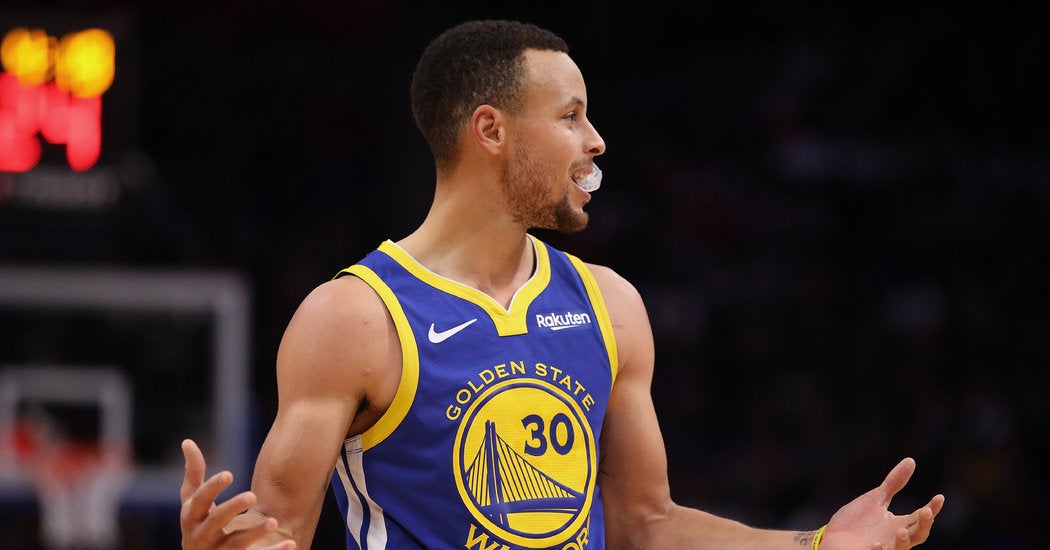Stephen Curry Doubts Moon Landings. NASA Offers to Show Him the Rocks.

It has been a big 24 hours for Stephen Curry. His team was named Sports Illustrated’s “Sportsperson of the Year,” he was named the Western Conference’s player of the week, and his comments denying the moon landing happened made him the enemy of science teachers everywhere.
Curry, who recently returned from injury and rejoined the Golden State Warriors in their quest for a third consecutive championship, was a guest on a podcast called “Winging It,” which is hosted by the N.B.A. players Vince Carter and Kent Bazemore as well as Annie Finberg, a digital content coordinator for the Atlanta Hawks.
During a wide-ranging talk among Carter, Bazemore, Curry and Curry’s teammate Andre Iguodala, the topic of the sounds dinosaurs made was being discussed before Curry abruptly shifted gears, asking the others if they believed the United States had put a person on the moon.
“We ever been to the moon?” he asked.
The others, in unison, agreed that the answer was no.
“They’re going to come get us,” Curry replied. “Sorry, I don’t want to start conspiracies.”
Finberg expressed some skepticism, asking Curry to clarify, and he said he did not believe the United States had landed on the moon, leading to a short discussion of some of the more popular conspiracy theories, including one asserting that the film director Stanley Kubrick had staged the entire thing.
In fact, NASA landed humans on the moon six times from 1969 to 1972, putting a total of 12 astronauts on the lunar surface. It was the only space agency to pull off a piloted mission to the moon, and, after a request from President Trump, NASA is working on plans for another piloted mission in the future.
“We’d love for Mr. Curry to tour the lunar lab at our Johnson Space Center in Houston, perhaps the next time the Warriors are in town to play the Rockets,” said Allard Beutel, a NASA spokesman. “We have hundreds of pounds of moon rocks stored there, and the Apollo mission control. During his visit, he can see firsthand what we did 50 years ago, as well as what we’re doing now to go back to the moon in the coming years, but this time to stay.”
Curry’s comments were reminiscent of the Celtics star Kyrie Irving’s oft-repeated skepticism that Earth is round. Irving drew a great deal of criticism for his comments but did not back down for some time. In October, more than a year after his first comments about the globe, Irving reversed course and explained that he had simply been “huge into conspiracies.”
Curry is far from being alone in expressing skepticism that the moon landing actually occurred, but NASA has worked hard to show through scientific evidence that it accomplished a feat that no other country could. And it is that competitive spirit among countries that the agency says should help confirm that it could not have faked the endeavor.
“There are answers to all the questions raised by the nonbelievers,” the agency says on its website, “but one of the strongest arguments is that all the Apollo missions were independently tracked by England and Russia (our allies and enemies), both of whom sent letters of congratulations after the moon landings. In the midst of a heated space race, the Russians would have called our bluff if the landings had not actually happened.”
Curry has yet to comment since his podcast comments were made public, but the astronauts of Apollo 17 provided an image that can serve as evidence both of a trip to the moon and of Earth being round — thus quashing the doubts voiced by Curry and Irving: The famous “Blue Marble” photograph of the planet, which was taken on the flight to the moon in 1972.


